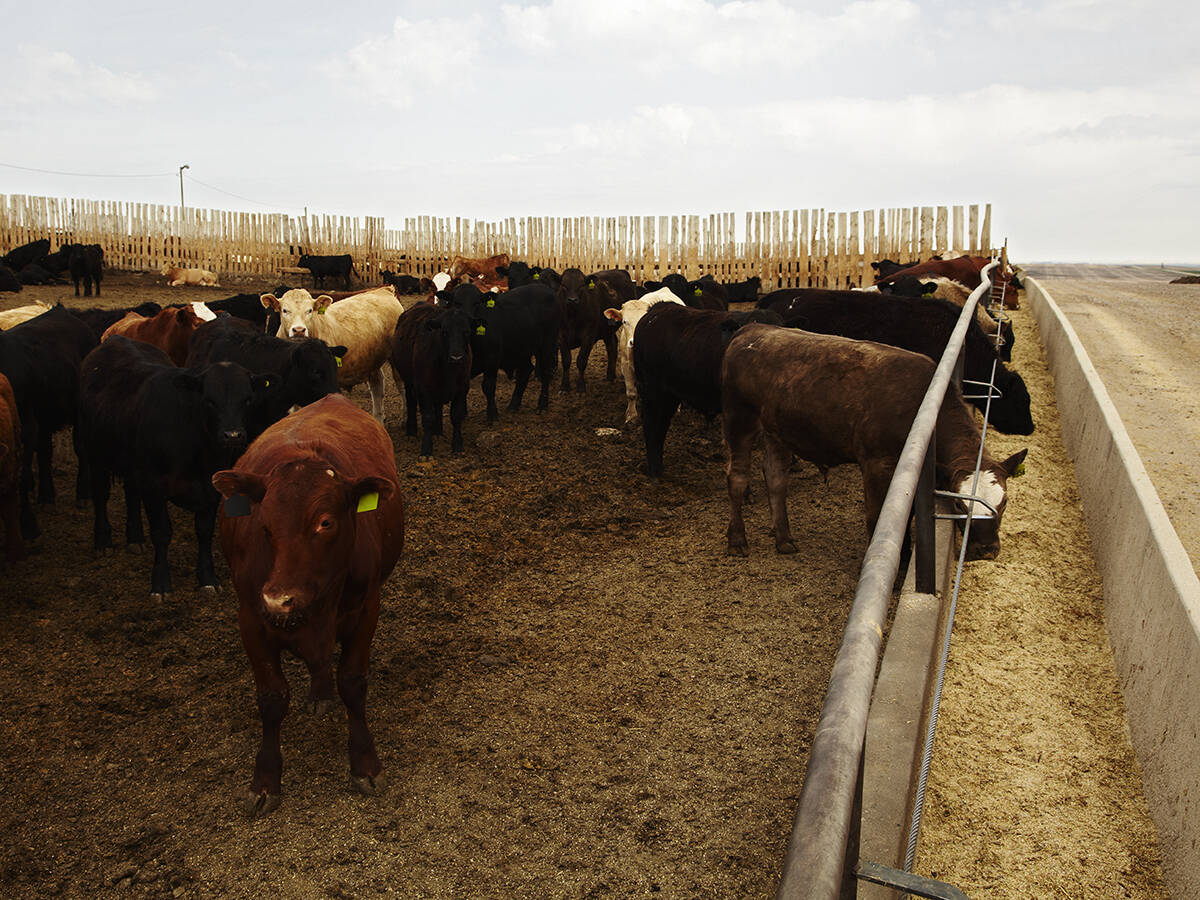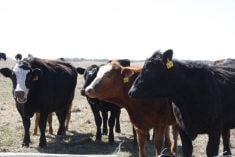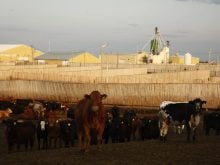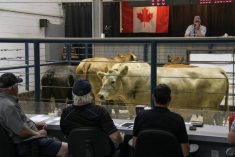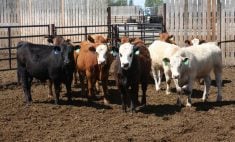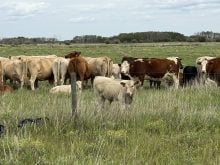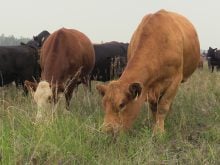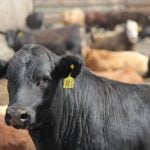This cattle market information is selected from the weekly report from Canfax, a division of the Canadian Cattlemen’s Association. More market information, analysis and statistics are available by becoming a Canfax subscriber by calling 403-275-5110 or at www.canfax.ca.
Fed prices trade lower
The western Canadian fed market continued to moderate during the week ending Oct. 10, a trend expected to persist into November.
Read Also

Trump’s tariffs take their toll on U.S. producers
U.S. farmers say Trump’s tariffs have been devastating for growers in that country.
Alberta fed steer prices dropped by $3.19 per hundredweight to close the week at $304.26 per cwt. Fed heifers brought $300.66 per cwt., down $2.05 per cwt. from the previous week.
Dressed sales for the week were around $507-$508 per cwt. delivered, which was steady to $8 per cwt. lower than the week before.
Live sales were reported at around $305.50 per cwt. f.o.b. the feedlot.
Cash market competition was mixed, and one major Western Canadian packer wasn’t bidding on cattle at that time. Cattle that traded were booked for delivery throughout November.
There was light interest from U.S. packers, and small volumes of western Canadian fed cattle went across the border, priced off the five-area average.
The Alberta fed cash-to-futures basis was -23.40, which was 9.92 weaker than the previous week and 9.83 weaker than the five-year average.
The nearby live cattle futures contract closed at $238.47 per cwt. on Oct. 10, almost reaching a record high. This was $7.37 per cwt. higher than at the start of October.
Very light trade was reported in Ontario, and dressed sales were in the range of $520-523 per cwt. delivered.
There were reports of sales to some smaller plants, with cattle scheduled for delivery in the next week or two. It was reported that one major packer wasn’t bidding on cattle.
The Ontario cash-to-futures basis was -11.32, which was 13.71 weaker than the previous week.
Non-fed market mixed
The non-fed market started the week ending Oct. 10 with strong prices, though it came under pressure near the end of the week.
Butcher cows were one bright spot, averaging in the high $220s per cwt. for a few weeks, which is just below the highs set in May.
With supportive competition for lighter non-fed supplies, good interest from feeder cow buyers and western Canadian packers alike was reported.
Usually, bred cows going to town are put on the slaughter market at this time of year, but this has not been the case this fall. While volumes haven’t been large, most of the bred females through the ring at commercial auction facilities are staying out of the slaughter mix and instead finding homes in cow herds.
In Eastern Canada, cow prices are down $20 per cwt. from a month ago.
Cow slaughter volumes in Western Canada are smaller than in 2024, while volumes in Eastern Canada are much higher than last year’s levels.
Fall run in full swing
Feeder prices remained close to record highs during the week ending Oct. 10 as large volumes of calves make their way to town.
Feeder cattle contracts rallied by $25 per cwt., or seven per cent, since mid-September, setting new contract highs over this week. Deferred live cattle contracts also hit new record highs during this week.
Preconditioned calves that had been weaned for 20-30 days were not bringing premiums over newly weaned calves.
Prices for yearlings came under pressure as supplies begin to decline seasonally. Heavier-weight steers and heifers were also under pressure.
On the forward delivery feeder market, Alberta steers weighing 750 pounds traded around $550 per cwt. for delivery in January and February 2026. These prices were comparable with the spot market.
With Alberta calves trading at a premium to the U.S., analysts anticipate this will encourage more U.S. imports, which are traditionally highest during October and November.
In Eastern Canada, feedlot demand has somewhat moderated. However, it was reported that calves from Western Canada were being sent as far east as Quebec.
Cutouts find support
U.S. cut-out prices rose during the week ending Oct. 10, strengthening somewhat after six weeks of declining prices.
Choice cutouts were up $2 per cwt. from the previous week, while Select prices rose by $1 per cwt.
Cut-out prices are up $54-$55 per cwt. from the same time last year.
The Choice-to-Select spread was $21 per cwt., slightly wider than in 2024 and steady with the five-year average.

